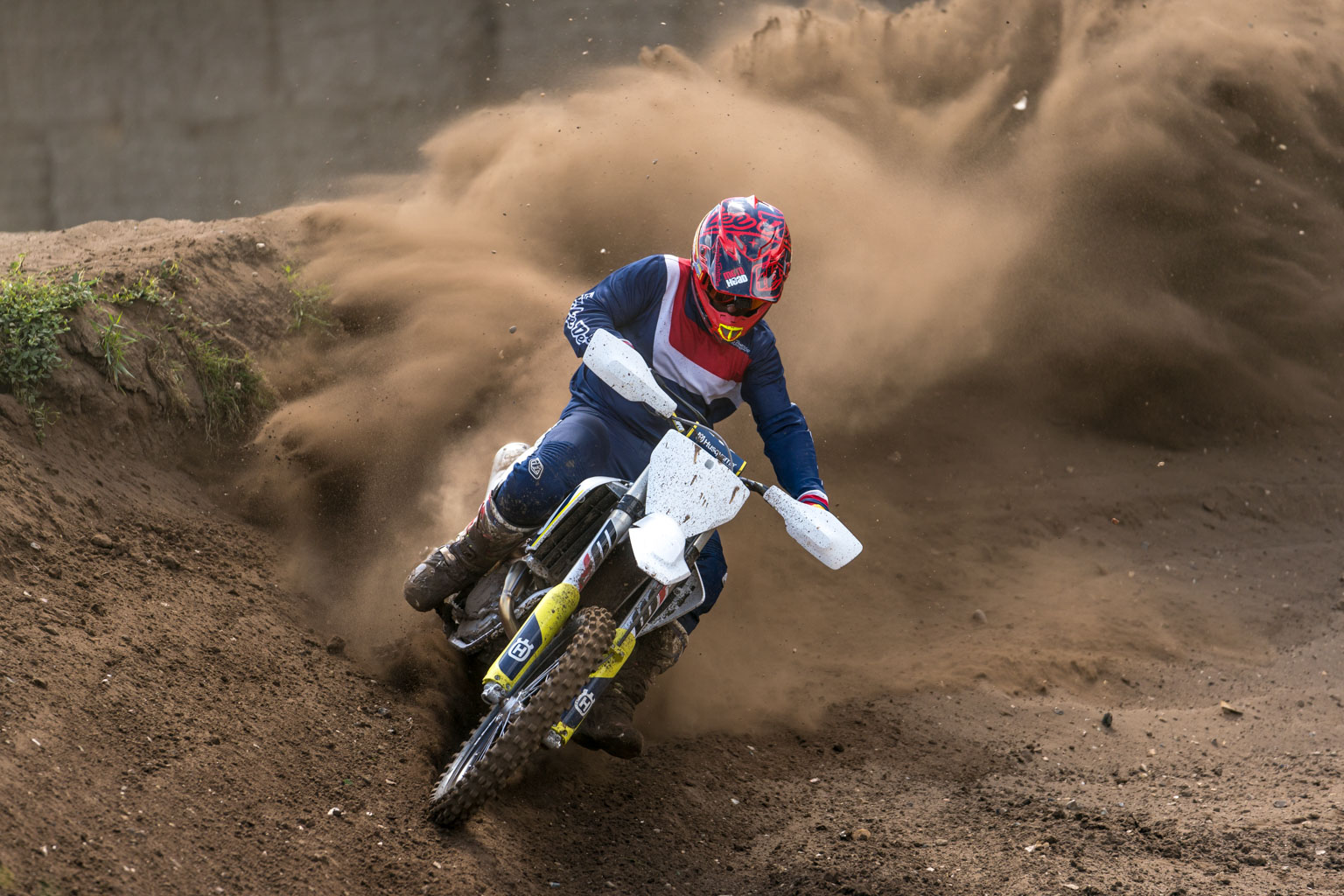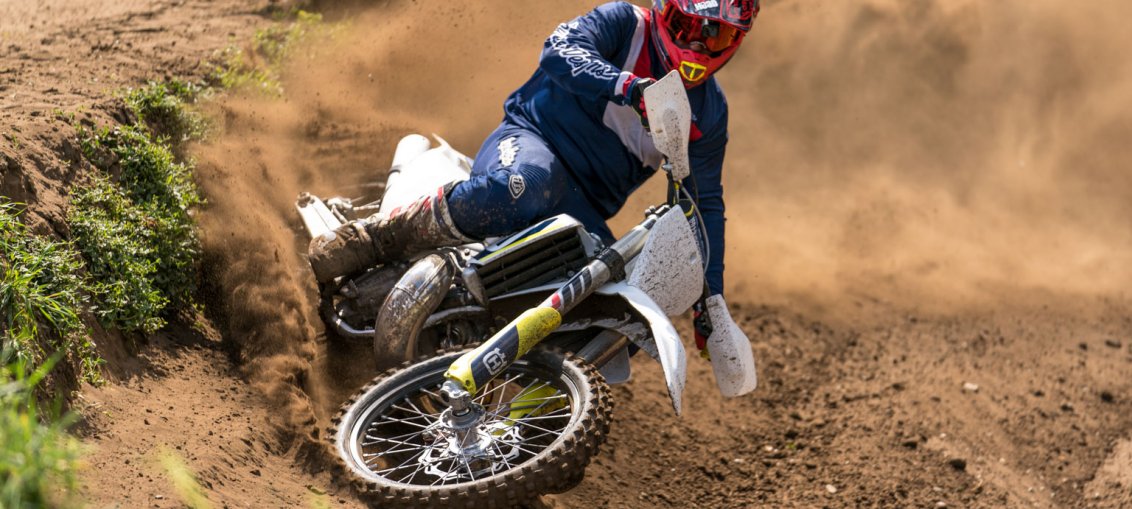
By Dave Willet. Probably the most-asked question about motocross bikes is what’s the difference between a Husqvarna and a KTM. Apart from the obvious things like colours and styling, they both roll of the same production line in Austria. And both share the same engines, main frames, electronics and, for 2018, suspension too. Last year KTMs came with newer-spec air forks than Husqvarna, with different wall thicknesses to dial in a bit more flex. This year, Husky gets them too, as well as the few detail changes to two-stroke motors and upgraded, lighter lithium batteries on the electric-start four-strokes. Plus the same launch control, traction control and engine mapping switches. The Husqvarnas were going to change from Brembo to Magura brakes, but a last-minute swop back means they come with Brembos again – same as the KTMs. There are other component differences in terms of things like handlebars and sprockets, too.
The biggest difference is the rear end of the bikes, where the KTMs have a conventional aluminium subframe and plastic airbox while the white bikes have a single-piece, carbon composite airbox and subframe combination.
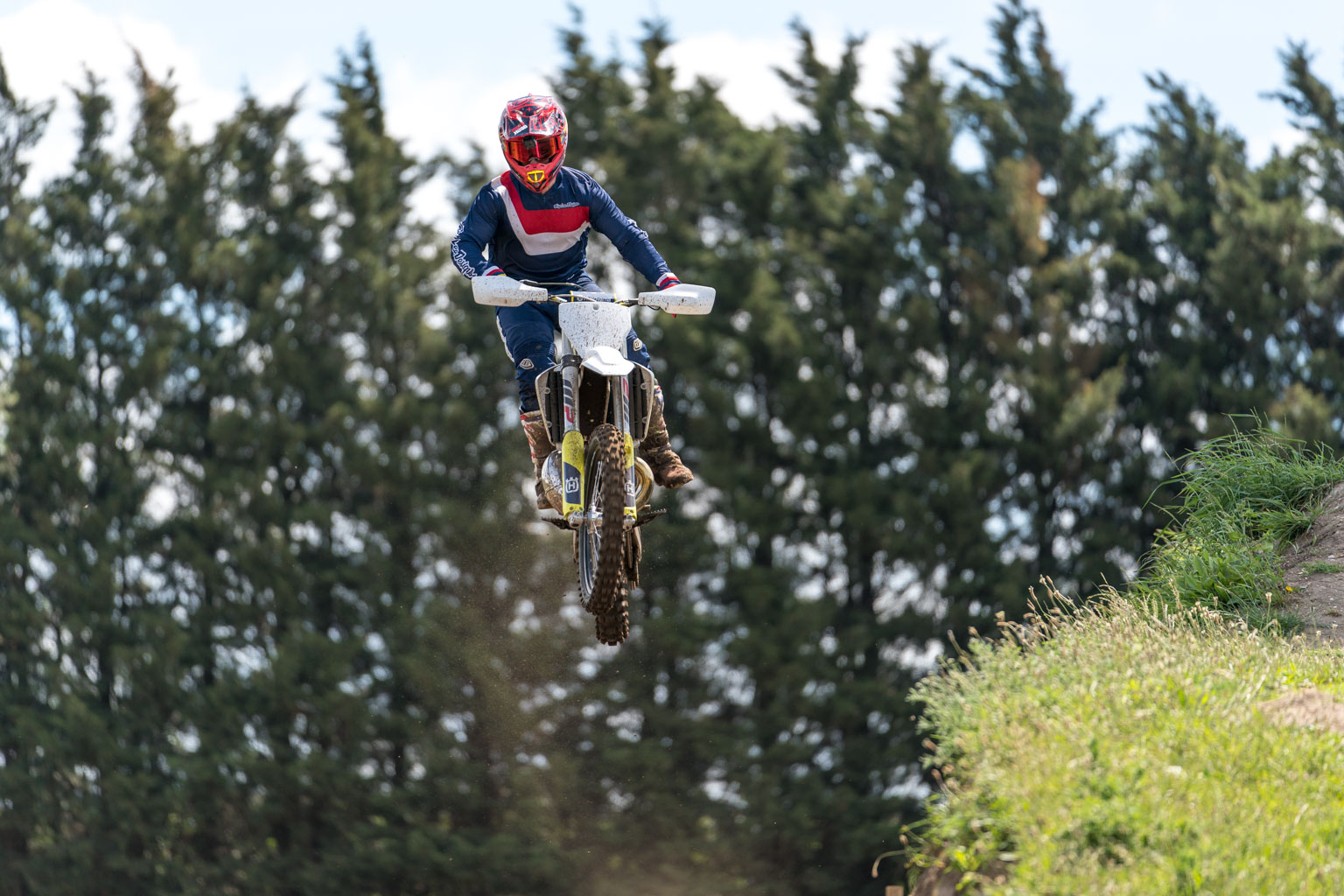
It’s this airbox that gives the Husqvarnas a different power delivery over the KTM because of the air flow is different. This pushes more air into the engine and gives the bikes more of a hit on track.
The Husqvarnas also feel more flat and lower from the tank to the rear end. The balance is slighty different. Just sit on the bike in the paddock and you can feel it, and out on track the bike pushes you more from the middle to rear of the bike. So a KTM and Husky might have the same DNA, but the feel is slightly different. Not night-and-day different, but they offer a different feel that means you might be slightly more comfortable on one brand rather than the other. Let’s take a look at each of the models after testing them at the Motoland UK track at Mildenhall.
Four-strokes: FC250
This bike is a real powerhouse for its capacity. Out of the full four-stroke range I loved it as I respect what it has to offer for what is a relatively small capacity. Like the 125 two-stroke you have to ride it hard. But you can rev it or use the torque of the motor which is pretty cool. I felt right at home on the TC250 and I felt like it went wherever I wanted it to as it’s light and nimble. The bike just feels well-balanced and in terms of power output – it’s right up there every year in the number game. I find the throttle response better when the engine mapping is set to the Advanced Option 2. It’s highly recommend.
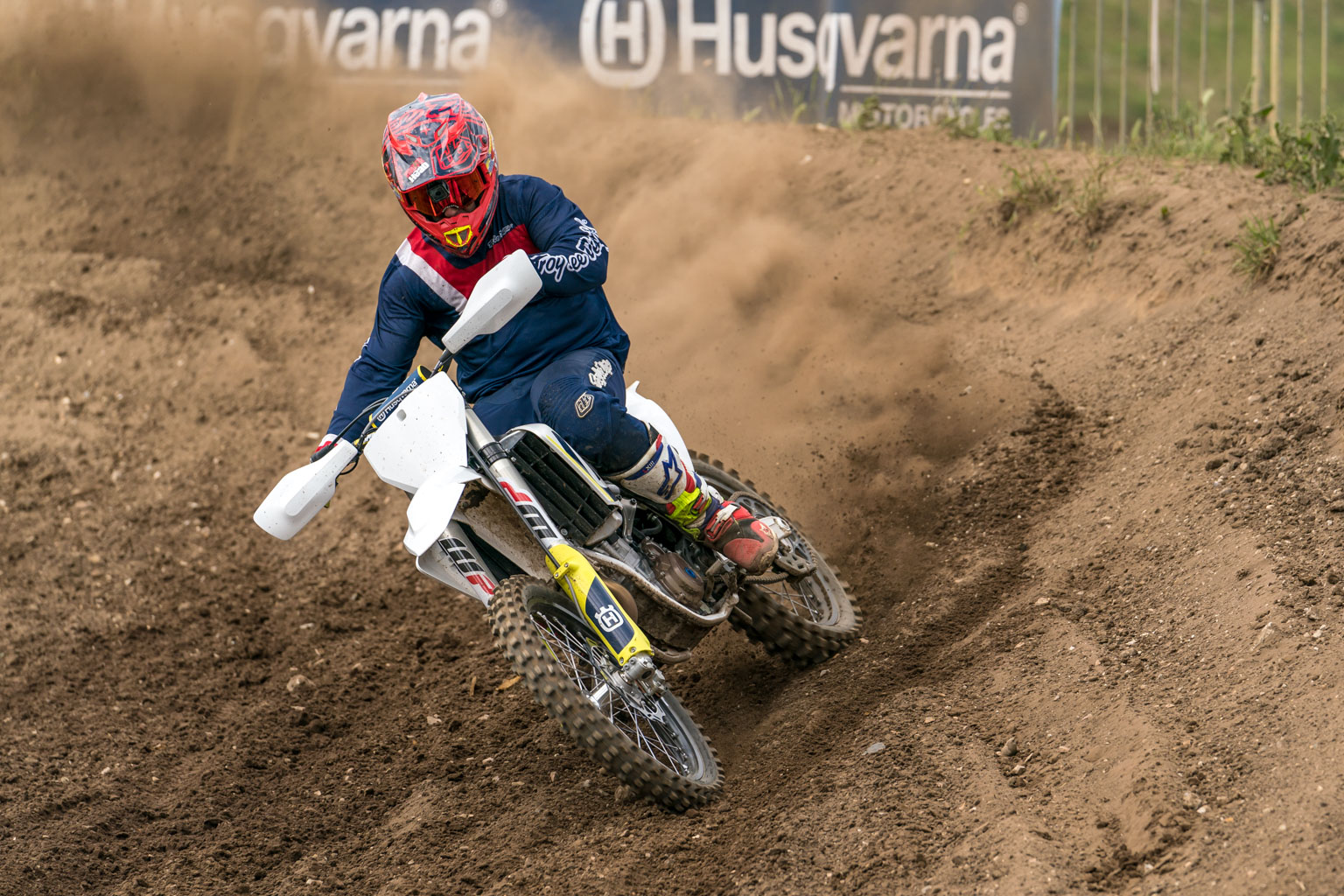
I like the fact every time you throw your leg over the bike and ride off you know it’s not going to leave you asking for more power to get you over the jumps. We’ve been spoilt over the years and the bikes have been doing a lot of the work for us and that’s the case with the FC250. It’s capable of more than any rider at pretty much all levels. It’s not hugely changed from last year but doesn’t need to be.
Four-strokes: FC350
This is my personal favourite bike of the range and rightly so. It’s close to being the perfect machine as it’s not sluggish off the throttle and very free-revving. The power has been in its own league for the last few years – unless you count the sibling KTM.
Compared to a 250, the 350 just feels so very different in a good way. The extra torque is rider-friendly and gives the bike the edge in the market because it appeals on so many levels.
For a time, the 350s were a tad nervous under braking as the rotating mass was higher than on the 250 but shared the same suspension settings. Since the introduction of air forks, this has easily been corrected for me as I can add a little pressure. If you’re a light rider, you can reduce the pressure but would need to rebalance the bike with different settings at the rear, too.
The feeling to watch out for is when rolling off the throttle as it takes it’s toll on the suspension and pushes through the stroke a little fast.

The three-stage mapping is welcome and I found the TC to be a benefit the 350 as it’s easy to break traction or get a hit of revs which fires you sideways. The TC controls the revs when it spikes which mellows out the power in an instant. It’s perfect on hard and slick surfaces, so it’s bets to try the bike with the TC on and off so when it comes to racing, you can use the modes to your advantage.
I personally like map 2 as it makes the engine feel more free revving, and when entering the turns its seems to lose that drag when you chop the throttle. The motor picks up faster too, compared to the other maps. You can pop over bumps and it makes the ride more enjoyable.
That’s the reason I prefer the 350 as it’s a fun bike to ride. It’s ideal on the short, small circuits the UK has to offer these days. It’s the 350 all the way baby.
Four-strokes: FC450
The 450 doesn’t really feel like a big bike any more. It feels compact, light and since the full model change back in 2016 where light weight and mass centralisation was the big change, the bike feels more Japanese than ever. Even though it has a steel frame.
The bike is super fast but the power is so useable. It’s not super aggressive and it has a wide range of power. You can rev it if you’re brave or use the bottom end and mid-range torque.
I found the TC worked well on this model but if it’s constantly coming in, chances are you’re in the wrong gear as the bike just drives through most conditions and sticks to the ground!
Map 2 is classed as the advanced map but I quite liked it on the 450 as the power felt smoother and more stretched out – also the bike didn’t feel slightly strangled like it did in map one.
I found the front forks good and it really turned well around Mildenhall. This track doesn’t have any long straights so it feels like you are always turning. The was easy to manoeuvre around – so much so that it made everything too easy. But this ease of going fast meant the bike could quite quickly catch you out as at times. You don’t realise how fast you’re going at times. It’s not until you hit the jumps and over jump them you realise the speed you travelling at.
It’s an out-and-out race bike that is super competitive or for a rider that just loves the thrill of straight-line racing out of the corners.
Two-strokes: TC125
The two-stroke Husqvarnas have been simply awesome but the 125 in particular had a few jetting issues – as did its KTM sibling. The Husky seemed a little cleaner which we think is down to the airbox allowing more air in.
The two-stroke range had some jetting issues due to the carb getting changed, resulting in the productions bikes coming out rich. A lot of riders found themselves with a box of jets and needles trackside searching for a better setting.
Riders of all levels were scratching their heads trying to clean out the pipe. From the enduro to the motocross range, it was clear the bikes where filling up with to much fuel. This was causing a lag when hard on the gas exiting a turn or on jump landings.
I listened to a lot of riders’ opinions on the 2018 launch as a lot of pro riders were riding the bikes with us which was pretty cool. The first thing everyone always mentioned first when voicing their opinion on the little smoker is how much fun it is to ride and the second is they can’t believe how much the bike revs. I heard very few negative comments. The only one I heard was maybe the front forks were in need of a few clicks on the compression, but with faster riders, it’s what you’d expect..
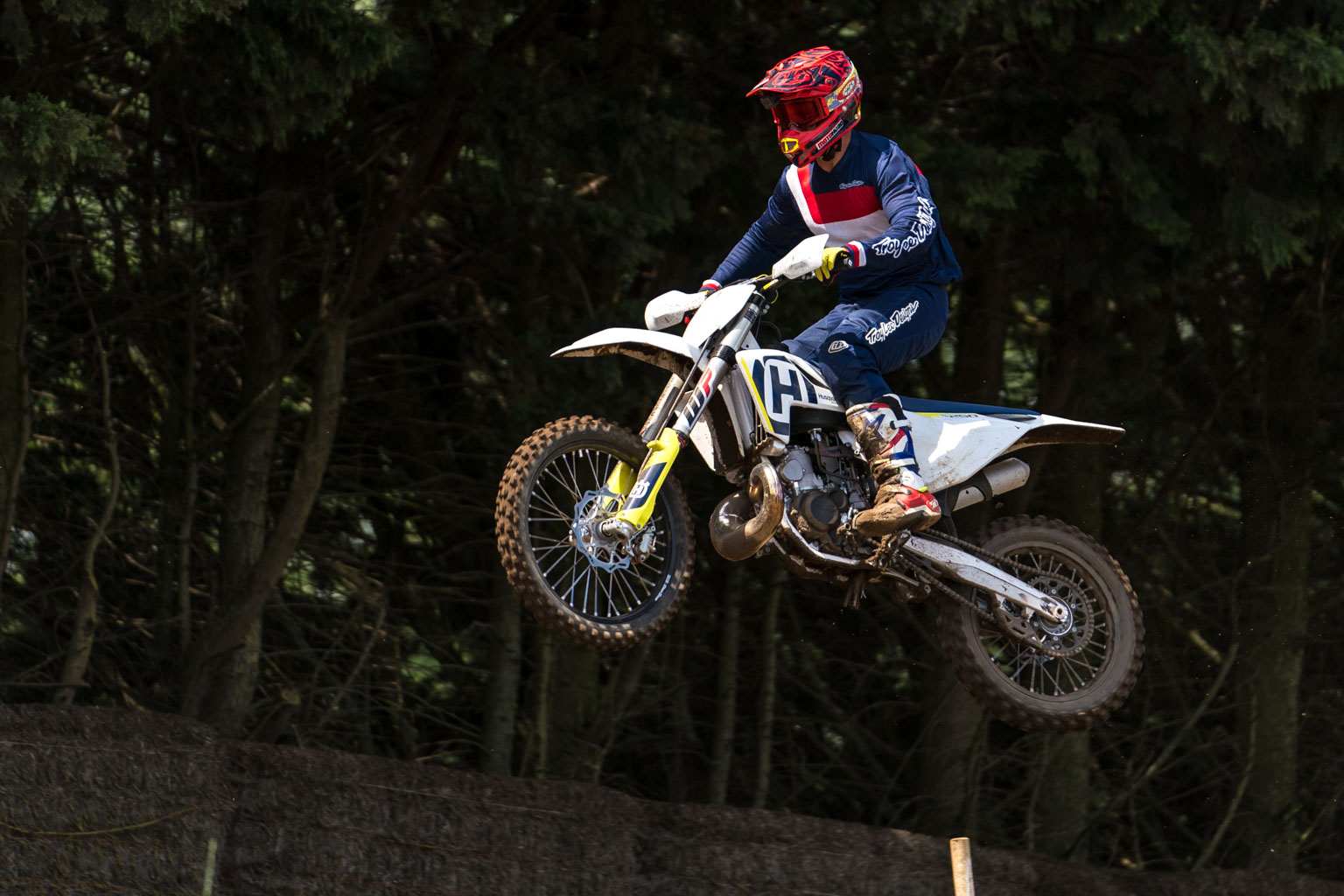
The 2018 bike has seen carb upgrades and the front forks have been tweaked with a new air chamber and different outer tubing. This is to improve the front end feel which is noticeable when entering the turn. A lot of riders can’t feel the difference but trust me there is. The front of the bike is really planted, which means the front wheel is getting better grip.
The information on the carb changes was harder to come by. But what I can say is the 125 was dropped a clip on the needle to make it learn. This sharpened up the bike for sure and give the bike a much-needed boost in throttle response. However this quick fix may only work for a few intermediate riders and I wouldn’t recommend it for all. I found the bike good for around the 12-minute market and then I heard the bike getting hot and detonating. Apparently the new revised carb modifications are the settings in the owner’s manual and not as delivered in the carb. So I’d adjust according the specifications by the manual. Also when I say dropped a clip on the needle I mean the clip went up and the needle went down – hence less fuel passing through the main jet.
The 125 is fast and really excels the harder you can twist it. The motor revs so much and that’s not to say that’s where all the power is because the torque is equally as good for such a small bike. Any 125 that can bring third gear into play around such a twisty track gets a thumbs-up from me, that’s for sure.
Two-strokes: TC250
The bike was all-new in 2017 and hasn’t changed a lot from last year. But in all honestly, it didn’t need it.
The ride is so good and isn’t like the unrideable 250 smokers of the past. It’s a machine that can be pushed around the track due to the power delivery. A lot of pro riders loved this bike at the Mildenhall test. They where actually surprised at how it wasn’t too vicious and all said it was so much fun to ride. The bike drives out of corners incredibly well and can pull a higher gear.
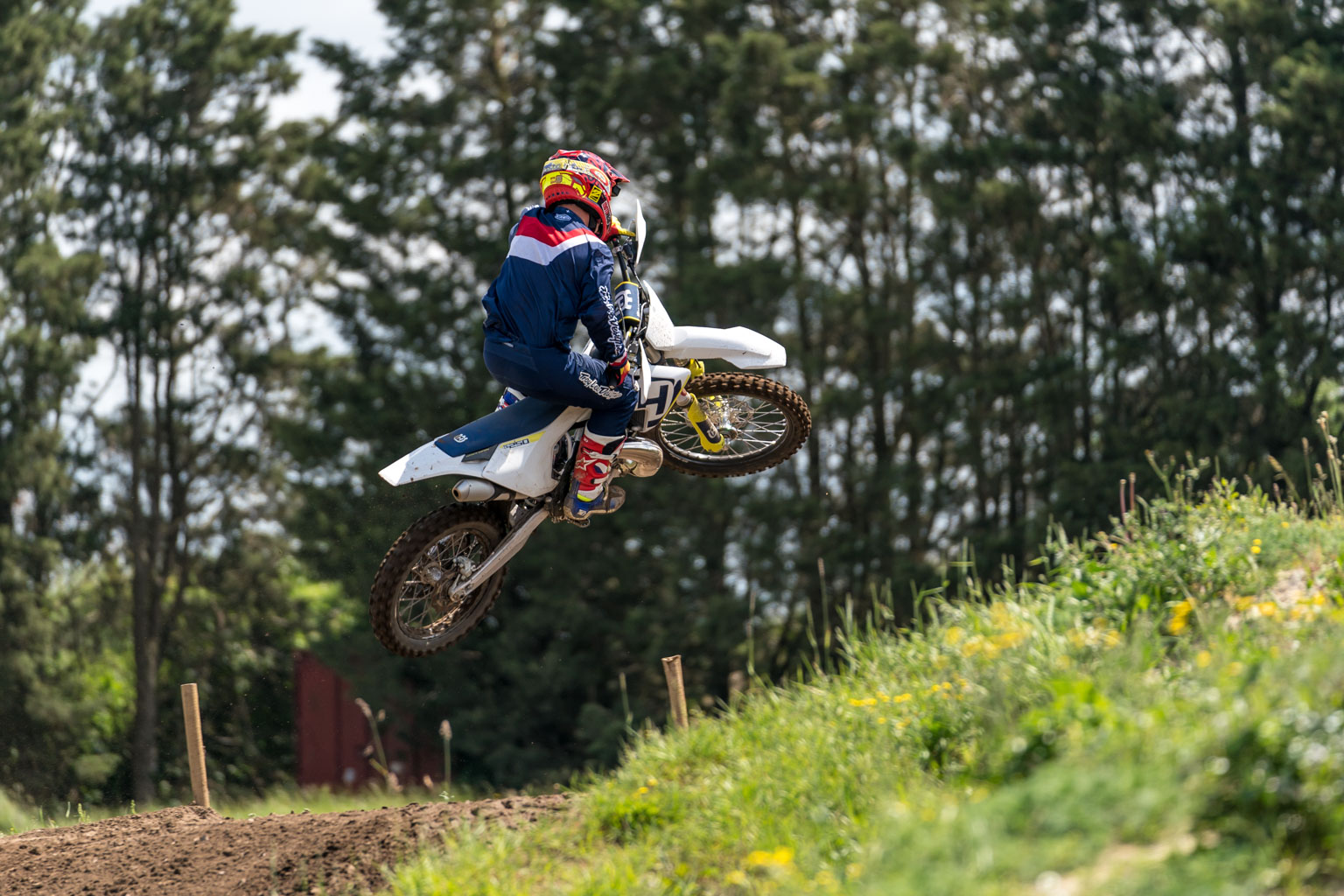
If you’re not on the pipe all the time it doesn’t matter as the bike won’t punish you for it. The TC250 doesn’t come too rich either as the airflow keeps it running on point.
This was my favourite bike of the day and I didn’t want to share it because it ticked all the boxes for me – balanced, rideable and fun!

